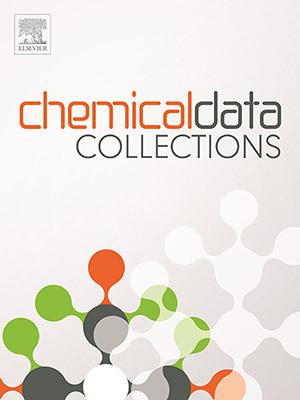Comprehensive investigation on synthesis, computational, antioxidant, antimicrobial, and bio-imaging studies of salicylaldehyde-based Schiff bases
IF 2.7
Q2 Chemistry
引用次数: 0
Abstract
The escalating resistance to antimicrobial drugs has become a significant public health concern, presenting significant challenges to the treatment and control of bacterial infections, thereby calling for the development of novel antimicrobial agents. Previous studies have reported diverse biological applications of Schiff bases, including antimicrobial, antiviral, and antimalarial. In that regard, we synthesized a series of salicylaldehyde-based Schiff base derivatives and analyzed their chemical structures using IR spectroscopy, 1H NMR, 13C NMR, mass spectrometry, and elemental analysis. The synthesized compounds were evaluated for their antimicrobial and antioxidant activities. Further, computational molecular docking was used to assess the drug-likeness properties of seventeen newly synthesized Schiff bases. These compounds were tested against two bacterial protein targets, namely PDB ID: 3UDI and 4CJN. Additionally, molecular dynamics simulations of over 100 ns were performed to monitor the complex's behavior and assess its stability over time. The outcomes revealed that the simulated complex remained stable throughout the simulation period. Moreover, the compounds CF5 and CF15 were then employed for bio-imaging studies using nematodes as a model organism.
水杨醛基席夫碱的合成、计算、抗氧化、抗菌和生物成像研究的综合研究
对抗菌药物的耐药性不断升级已成为一个重大的公共卫生问题,对细菌感染的治疗和控制提出了重大挑战,因此要求开发新的抗菌药物。先前的研究报道了希夫碱的多种生物学应用,包括抗菌、抗病毒和抗疟疾。为此,我们合成了一系列基于水杨醛的希夫碱衍生物,并利用红外光谱、1H NMR、13C NMR、质谱和元素分析分析了它们的化学结构。对合成的化合物进行了抗菌和抗氧化活性评价。此外,计算分子对接用于评估17个新合成的希夫碱的药物相似性质。这些化合物对两个细菌蛋白靶点进行了测试,即PDB ID: 3UDI和4CJN。此外,进行了超过100 ns的分子动力学模拟,以监测配合物的行为并评估其随时间的稳定性。结果表明,模拟复合物在整个模拟期间保持稳定。此外,化合物CF5和CF15随后被用于以线虫为模式生物的生物成像研究。
本文章由计算机程序翻译,如有差异,请以英文原文为准。
求助全文
约1分钟内获得全文
求助全文
来源期刊

Chemical Data Collections
Chemistry-Chemistry (all)
CiteScore
6.10
自引率
0.00%
发文量
169
审稿时长
24 days
期刊介绍:
Chemical Data Collections (CDC) provides a publication outlet for the increasing need to make research material and data easy to share and re-use. Publication of research data with CDC will allow scientists to: -Make their data easy to find and access -Benefit from the fast publication process -Contribute to proper data citation and attribution -Publish their intermediate and null/negative results -Receive recognition for the work that does not fit traditional article format. The research data will be published as ''data articles'' that support fast and easy submission and quick peer-review processes. Data articles introduced by CDC are short self-contained publications about research materials and data. They must provide the scientific context of the described work and contain the following elements: a title, list of authors (plus affiliations), abstract, keywords, graphical abstract, metadata table, main text and at least three references. The journal welcomes submissions focusing on (but not limited to) the following categories of research output: spectral data, syntheses, crystallographic data, computational simulations, molecular dynamics and models, physicochemical data, etc.
 求助内容:
求助内容: 应助结果提醒方式:
应助结果提醒方式:


